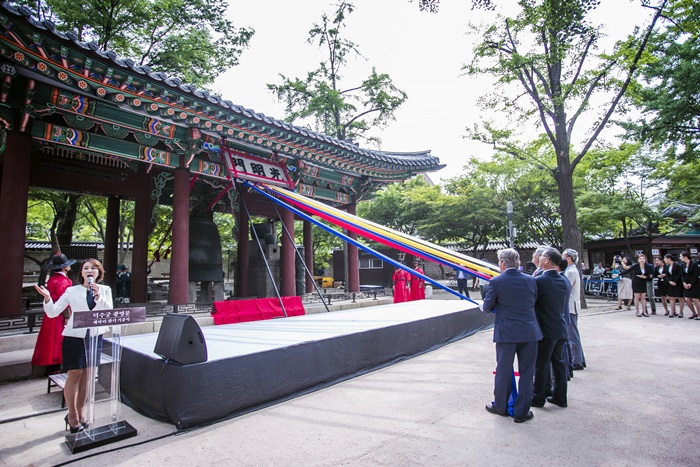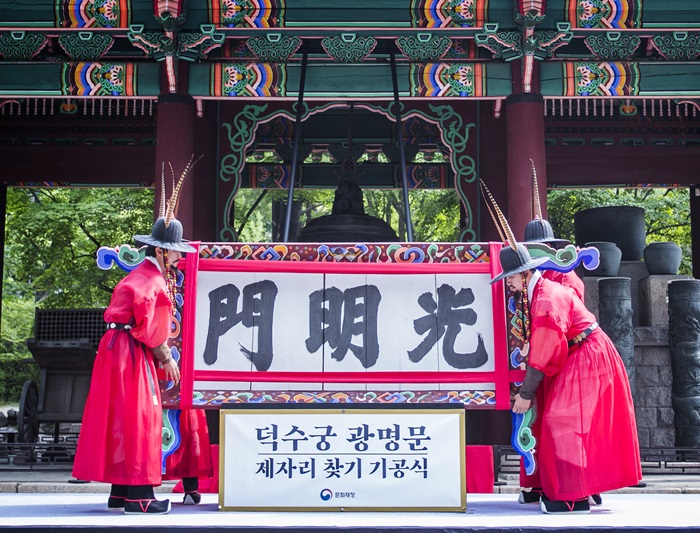
The Gwangmyeongmun Gate, which had been neglected for 80 years, is taken down during a relocation ceremony in Jung-gu, Seoul, on June 19.
By Hahm Hee-eun
Photos = Cultural Heritage Administration
Deoksugung, the symbol of the Korean Empire (1897-1910), will be restored to its original form.
The Cultural Heritage Administration announced on June 19 that Deoksugung Palace, which was a victim of much destruction during colonial times, will be restored to its original form of a century ago.
Deoksugung Palace was used as the main palace for 13 years, after Emperor Gojong proclaimed the Korean Empire in 1897. At the time, the palace occupied a larger area, but after the death of Gojong in 1919, the palace was cut in size and altered for various reasons.
Within Deoksugung Palace, the Gwangmyeongmun Gate, which was originally the front door of the Hamnyeongjeon Hall, was moved to a different location by the colonial government. Then it became an exhibition hall for cultural assets. Dondeokjeon Hall, where banquets were held, was turned into a children’s playground, and its historical value was hidden from the public eye. The Seonwonjeon Hall, where portraits of former monarchs were enshrined and where ancestral rites were performed, was completely dissembled and transferred to the U.S. embassy in Korea.

The Cultural Heritage Administration holds a relocation ceremony for the Gwangmyeongmun Gate in Jung-gu, Seoul, on June 19.
In order to respond to this situation, the Cultural Heritage Administration announced that it would carry out a restoration project at Deoksugung Palace and restore the Gwangmyeongmun Gate, Dondeokjeon Hall, and the Seonwonjeon Hall to their original forms. The relocation of the Gwangmyeongmun Gate is scheduled to be completed by the end of this year. Dondeokjeon Hall is expected to be completed in 2021, after the restoration this year. It will be used as a museum about the Korean Empire. The Seonwonjeon Hall will be restored in three stages through to 2038, along with other major royal buildings, such as Heungdeokjeon Hall, where the king and queen’s bodies were kept, and Heungbokjeon Hall, where bodies were enshrined temporarily before moving them to the Jongmyo Shrine.
A spokesperson from the Cultural Heritage Administration said, "Through these restoration projects at Deoksugung Palace, we hope to restore the broken palace, and firmly establish the identity of the Korean Empire.”
hehahm@korea.kr